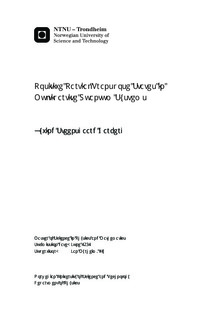| dc.contributor.advisor | Myrheim, Jan | nb_NO |
| dc.contributor.author | Garberg, Øyvind Steensgaard | nb_NO |
| dc.date.accessioned | 2014-12-19T13:17:48Z | |
| dc.date.available | 2014-12-19T13:17:48Z | |
| dc.date.created | 2012-11-08 | nb_NO |
| dc.date.issued | 2012 | nb_NO |
| dc.identifier | 566321 | nb_NO |
| dc.identifier | ntnudaim:8029 | nb_NO |
| dc.identifier.uri | http://hdl.handle.net/11250/246756 | |
| dc.description.abstract | In this master thesis I study the extremal positive partial transpose (PPT) states of the three qubit $(2times2times2)$ system using numerical methods. Using two algorithms which locate PPT states of a specified rank and extremal PPT states respectively, I have located numerical examples of extremal PPT states with a variety of ranks. These numerical results confirm the analytical result that all PPT states of rank less than four are separable. I also derive an upper limit on the ranks of extremal PPT states. The extremal PPT states of lowest rank, the rank four states, were studied in more detail. These states were confirmed to be biseparable in accordance with both previous analytical and numerical results. The range and kernel of these states were examined for product vectors, but none were found. In an attempt to parametrize the SL$otimes$SL equivalence classes of these extremal rank four states I have studied an analytical method to construct such states based on unextendible product bases (UPBs). This method can be used to create PPT states from a single equivalence class where, by design, the kernel of all states contain a UPB and the range contains no product vectors. All states where the range is not spanned by a basis of product vectors are necessarily entangled. I also present a numerical method for creating extremal rank four states that are symmetric under various combinations of partial transposes. Numerical examination of these states reveal no product vectors in neither range nor kernel. The existence of rank four states with and without product vectors in their kernel implies the existence of at least two equivalence classes. To get a better impression of these equivalence classes I construct quantities that are invariant under SL$otimes$SL transformations and must therefore have the same value for all states in the same equivalence class. Calculating the values of these invariants for all the rank four extremal states I have generated gives a seemingly continuous range of values. This indicates that there is an infinite number of equivalence classes likely described by one or more continuous variables. The invariants also revealed an interesting set of states that may belong to a single equivalence class, where one invariant is zero and the others have identical values. This was the only equivalence class where more than one of my states were included. There is obviously something special about this class, but I do not know what it is. | nb_NO |
| dc.language | eng | nb_NO |
| dc.publisher | Institutt for fysikk | nb_NO |
| dc.subject | ntnudaim:8029 | no_NO |
| dc.subject | MTFYMA fysikk og matematikk | no_NO |
| dc.subject | Teknisk fysikk | no_NO |
| dc.title | Positive Partial Transpose States in Multipartite Quantum Systems | nb_NO |
| dc.type | Master thesis | nb_NO |
| dc.source.pagenumber | 66 | nb_NO |
| dc.contributor.department | Norges teknisk-naturvitenskapelige universitet, Fakultet for naturvitenskap og teknologi, Institutt for fysikk | nb_NO |

